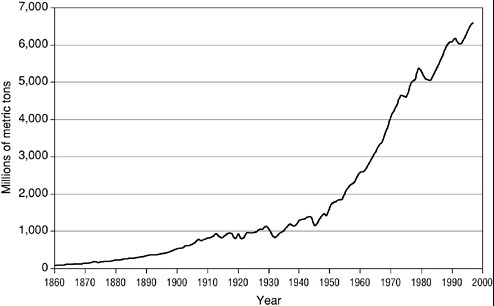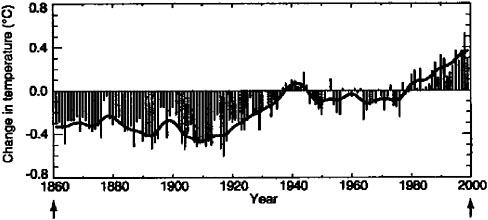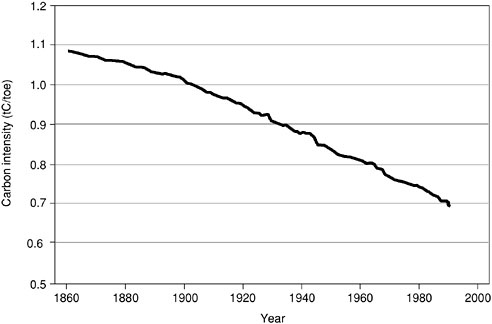Panel I
Understanding, Adapting, and Mitigating Climate Change through Engineering
As our understanding of the dynamics of climate change improves, we must initiate organized efforts either to influence or to adapt to these changes. This panel addresses the role of the engineering community in understanding and responding to changes in Earth systems.
Climate Systems Engineering
ROBERT M. WHITE
People have attempted to manipulate earth systems for thousands of years. Primitive engineering tended to focus on basics, such as shelter, water resources, and transportation, and little thought was given to the ancillary and frequently deleterious consequences of human activities. Addressing these consequences has now become the focus of attention.
Climate systems engineering, a subset of Earth systems engineering, is a multipurpose, multidisciplinary approach to monitoring, adapting to, and even mitigating the consequences of climate change. For much of history, climate change was regarded as an act of God over which people had no control. Recently, however, human activities have been acknowledged to be at least partly responsible for climate change, particularly global warming. Today, climate change is a topic of intense national and international interest because of its environmental, economic, and social consequences.
Modern weather and climate sciences are largely the result of advances in engineering and technology. Scientific weather forecasting became possible 150 years ago with the introduction of the telegraph, which provided a mechanism for transmitting weather information from remote areas to central locations where they could be analyzed. Since World War II, a host of other technologies has revealed some of the mysteries of climatic conditions. Radiosondes provide a view of the upper atmosphere; radar has transformed our understanding of the dynamics of precipitation and cloud systems; computers have enabled us to construct mathematical models of weather and climate. Very recently, space technology has provided imaging, sounding, and location capabilities making possible
the global monitoring of weather and climate. All of these have transformed climate prediction from an art to a science.
Since the beginning of the Industrial Age, the increasing use of fossil fuels, deforestation, and emissions from other sources have dramatically increased atmospheric concentrations of greenhouse gases. Annual emissions of carbon dioxide (CO2), for example, have increased from barely detectable levels 140 years ago to more than 6 billion metric tons per year (Figure 1). Observations at observatories around the world have shown that the increase has been essentially monotonic, except for seasonal fluctuations. The result of this 25-percent increase (from approximately 290 parts per million by volume [ppmv] in 1860 to about 360 ppmv in 1999) has resulted in a rise in global mean surface temperature (Figure 2). The temperature change is a matter of observational fact about which there is little dispute.
According to the Intergovernmental Panel on Climate Change (IPCC), mathematical climate models indicate that global surface temperatures will increase significantly by 2100 (IPCC, 2001). Most models project an increase of 1.5 to 4.5°C. The latest IPCC assessment estimates a temperature rise of 1.5 to 5.8°C, most likely about 2.5°C and an increase in global precipitation. Sea level is also rising, largely because of the thermal expansion of seawater; the rise is predicted to be approximately 0.5 meter.

FIGURE 1 Global anthropogenic CO2 emissions, 1860–1994. Source: Adapted from Marland et al., 2000.

FIGURE 2 Global mean surface temperatures. Source: IPCC, 2001.
The regional distribution of climate change and its impact on agriculture, ecosystems, and water resources, as well as its effect on severe weather, such as hurricanes, are less certain. In a recent report on the impact of climate change on the United States, the National Assessment Synthesis Team (2000) focused on the consequences through 2100 for five sectors of the economy and 16 geographical regions. The analysis was based on two different climate models, one developed by scientists in Canada and the other by scientists in the United Kingdom. Both models project warming for the United States as a whole, but their regional projections differ significantly.
Despite the uncertainties, projections of future climate change present us with a serious dilemma. How should we balance the costs of the economic and social impacts of climate change with the costs of engineering and technology that could prevent those consequences? When and at what cost should we build dams and seawalls and stronger bridges? When should we turn to biotechnology, such as drought-resistant and heat-resistant strains of grain?
Almost 10 years ago, in the Framework Convention on Climate Change (FCCC), the international community agreed to try to “achieve stabilization of greenhouse gas concentrations in the atmosphere at a level that would prevent dangerous anthropogenic interference with the climate system” (United Nations, 1992). The convention addressed CO2 and other greenhouse gases, including methane, ozone, and nitrous oxide. Because CO2 dominates the greenhouse gas mixtures, however, the following discussion is focused on CO2.
The convention did not define “dangerous,” but any definition must include familiar, sometimes devastating, phenomena, such as threats to the food supply and water resources; rising sea level that can lead to inundations of islands and coastal areas; an increase in severe weather, such as hurricanes, floods, and
droughts; changes in ecosystems; and adverse health effects, such as increased pulmonary and cardiovascular diseases. Mitigating global warming is one of the most important, difficult, and complex challenges ever faced. The prime causes of elevated global CO2 concentrations are CO2 emissions from the combustion of fossil fuels and deforestation (Table 1). Humanity’s addiction to fossil fuels (coal, gas, and oil) as sources of energy is responsible for much of the rise. Attempts to solve the problem by decarbonizing the global energy supply were begun more than a century ago (Figure 3).
Since the climate convention was initialed in 1992, governments around the world have been looking for ways to control atmospheric greenhouse emissions without setting specific targets for atmospheric concentrations. The Conference of the Parties (COP), a group established to negotiate the details of the FCCC, has met six times to work out an agreement on international action. A meeting at The Hague in late 2000 ended in disagreement.
A protocol initialed by the COP in Kyoto, Japan, in 1997 would limit emissions of CO2 and other greenhouse gases and assign emission targets to industrialized countries. Developing countries unwilling to commit to the protocol were given a pass (United Nations, 1997). The Kyoto agreement requires that the United States reduce greenhouse gas emissions to a level 7 percent below 1990 levels by 2010. Achieving this reduction would require reducing U.S. consumption of fossil fuels about 35 percent below the expected level in 2010. The reduction would require dramatic changes in energy production and energy use in this country.
The Kyoto signatories agreed that the sequestration of carbon in the biosphere, principally by trees, could be an ancillary approach for reducing greenhouse gas concentrations in the atmosphere. The United States proposed that it be permitted to use carbon sequestration by forest and agricultural lands and emissions trading with other countries to account for about 50 percent of the required reduction. This proposal was rejected by the European members of COP and was largely responsible for the collapse of the Hague conference. Alternative scenarios for meeting the Kyoto targets that focus more on non-CO2 gases were proposed by Hansen et al. (2000).
TABLE 1 Principal Sources of Anthropogenic CO2 Emissions
|
Source |
Gigatons of carbon per year (GtC/yr) |
|
Fossil fuel combustion |
5.5 ± 0.5 |
|
Deforestation |
1.6 ± 1.0 |
|
Total anthropogenic emissions |
7.1 ± 1.1 |

FIGURE 3 Decarbonization: carbon intensity of global energy consumption (tons of carbon per ton of oil equivalent energy [tC/toe]). Source: Nakicenovic, 1996.
Even if the Kyoto protocol were successful, there is general agreement that it would only be a first step that would have only a minimal effect on projected global warming. According to the IPCC, emissions targets in the protocol would reduce global average temperatures by an insignificant amount. Emissions reductions of 60 to 80 percent would be necessary to stabilize atmospheric CO2 concentrations at their present levels. The agreement has also been fraught with political controversy because China, India, and other developing countries have been unwilling to restrict their emissions.
Anticipating the wrenching changes that will be required and aware that not all nations will be required to reduce emissions, the U.S. Senate voted unanimously against U.S. participation in the Kyoto protocol. In addition, in 2001 the Bush administration announced that it would not regulate CO2 emissions from power plants and indicated that the United States would withdraw from the Kyoto protocol.
Minimizing, or even reversing, the adverse effects of climate change is an extremely complex challenge. The first step will be setting target levels of global greenhouse gas concentrations, a process that is rife with uncertainties and controversy. Setting targets will require knowledge of (or plausible estimates of) the consequences of specific limits. A commonly discussed target, greenhouse gas
concentrations roughly double those of the era before the Industrial Revolution, would yield a concentration of about 550 ppmv, which many believe would prevent dangerous interference with the climate system. Engineers and technologists are faced with a mind-boggling array of options for achieving specific target concentrations of greenhouse gases. Options include reducing emissions of CO2 from fixed and mobile sources, sequestering carbon dioxide, reducing the emissions of other greenhouse gases, and using geoengineering (e.g., injecting dust or other particulate matter into the stratosphere to reduce the amount of solar radiation reaching Earth) on a global scale (Box 1).
|
BOX 1 Reductions in Emissions of CO2 and Other Greenhouse Gases
Carbon Sequestration
Geoengineering
|
Even if new, low-carbon energy systems are developed, carbon is sequestered, and concentrations of other greenhouse gases can be reduced, much more will have to be done. We will have to anticipate the consequences of climate change on ecosystems, water resources, agriculture, health, and other human concerns. We will also have to consider the effects of new technologies on human health and ecosystems. In addition, these technologies will have to be culturally acceptable. These considerations cannot be afterthoughts; they must be included in the requirements and development of a technology. Answering these and many more questions will require extensive collaboration between scientists and engineers in many fields.
Because of the global nature of climate change, the issue has both domestic and international dimensions. In addition to participating in international negotiations on atmospheric concentrations of CO2, we must reach out to engineering communities in other countries to enlist their help. The task before us is formidable. A wise course of action would be to take action to reduce emissions and sequester carbon now and, at the same time, invest in research and engineering to generate new technologies that will enable us to meet target concentrations in the future.
REFERENCES
Hansen, J., M. Sato, R. Ruedy, A. Lacis, and V. Oinas. 2000. Global warming in the 21st century: an alternative scenario. Proceedings of the National Academy of Sciences 95: 9875–9880.
IPCC (Intergovernmental Panel on Climate Change). 2001. Climate Change 2001: Synthesis Report: Third Assessment Report of the IPCC. New York, N.Y.: Cambridge University Press.
Marland, G.T., T. Boden, and R.J. Andres. 2000. Global CO2 Emissions from Fossil-Fuel Burning, Cement Manufacture, and Gas Flaring: 1751–1997. Available online at <http://cdiac.esd.ornl.gov/ftp/ndp030/global97.ems> (April 16, 2001).
Nakicenovic, N. 1996. Freeing energy from carbon. Daedalus 125(3): 95–112.
National Assessment Synthesis Team. 2000. Climate Change Impacts on the United States: An Overview. Cambridge, U.K.: Cambridge University Press.
United Nations. 1992. United Nations Framework Convention on Climate Change. Available online at <http://www.unfccc.de/resource/conv/index.html> (March 21, 2001).
United Nations. 1997. United Nations Kyoto Protocol. Third Session of the Conference of the Parties to the Framework Convention on Climate Change in Kyoto, Japan, December 1997. Available online at <http://www.unfccc.de/resource/protintr.html> (March 22, 2001).










